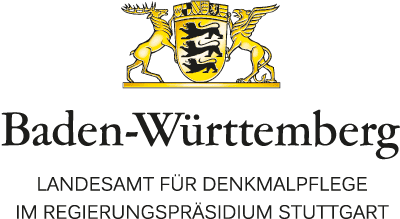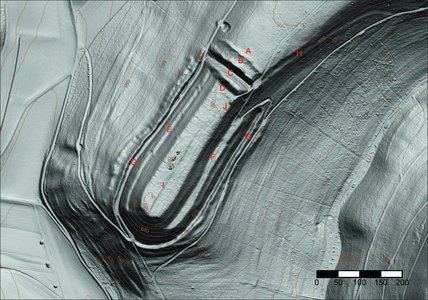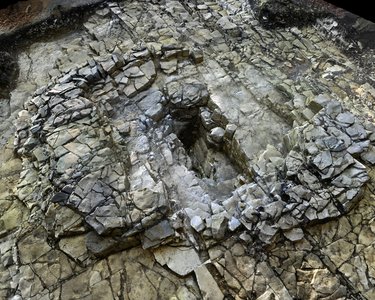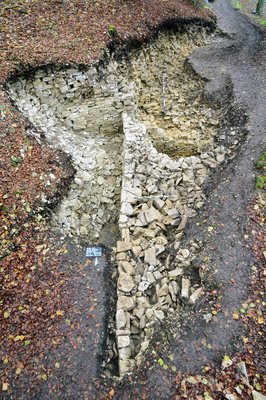About 9 km northwest of the Heuneburg, hidden in the forest near Langenenslingen, is an archaeological enigma: the Alte Burg. The completely man-made complex is located on the southern edge of the Swabian Alb at an altitude of about 700m above sea level. The very regular 2-hectare inner area, which lies about 100m above the valley floor, is now 340m long and about 60m wide. On each of the long sides is a terrace carved out of the slope. In the northeast, two ramparts and a mighty limestone wall, 13m thick, and originally at least 10m high, sealed off the inner area during the Hallstatt period. At right angles to the main wall, there was a 6m wide boundary wall. In front of the main wall was a huge ditch which led into a ring of fortifications about 1km long. An old path leading up the steep slope from the north-east was probably used as early as the Hallstatt period.
Although several excavations have taken place at the Alte Burg, the original purpose of the site is still debated. The first investigations on the plateau took place as early as 1894. At that time, a small stone mound was removed, under which a shaft with six human skeletons was found. The excavations of the years 2006-2008 and especially 2014-2020 have demonstrated clearly that the entire mountain spur was reshaped in the Hallstatt period. In order to model the relatively flat, tongue-shaped plateau, the slope edges were artificially widened and the terrain was levelled by excavation and filling.
Despite the fortified impression of the fortifications, there is so far no evidence of long-term settlement activities at the Alte Burg, as neither house foundations nor hearths, or evidence of a water supply have been found. Rather, it should be assumed that the Alte Burg, which certainly stood out from afar as a whitish-grey monument in the surrounding landscape, was a cult or assembly centre belonging to the Heuneburg, where perhaps also sporting games and competitions took place.
References: Hansen et al. 2020a; Hansen/Krausse/Tarpini 2021a.




